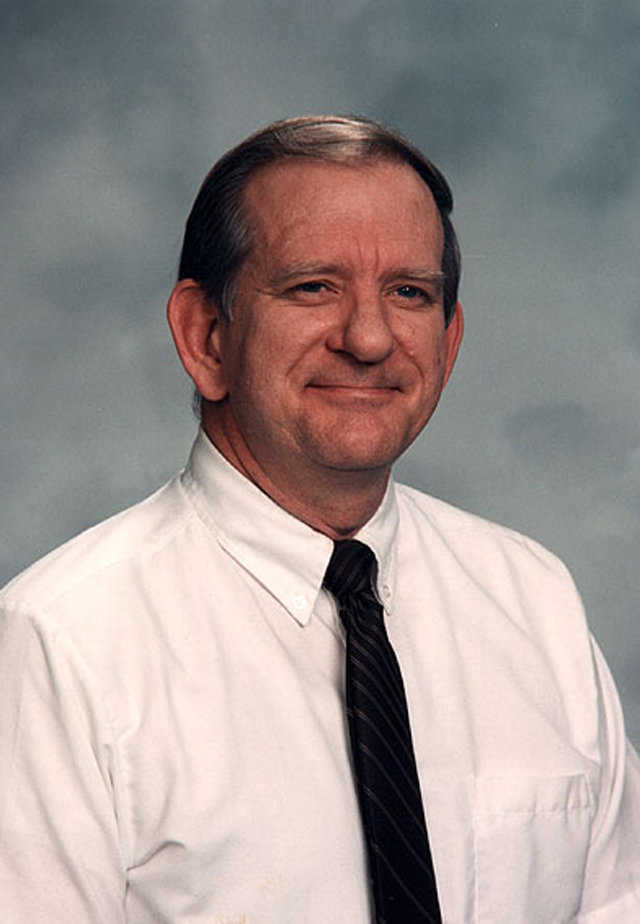“It’s the stretch!”
That’s what Rick Crandall, one of Monolithic’s consulting architects, credits for his continued interest in Monolithic Domes. This Arizonian recalls that in 1996 when his association with the Monolithic Dome Institute first began, two factors fueled his interest in domes.
“I was persuaded by the good experiences I had working with David South and other architects in the first four or five projects we did,” Crandall says. "But another factor was equally compelling: the stretch.
“My prevailing questions were: What can be done with this new method of construction? What can we accomplish with it? That potential stretch intrigued me then and still does,” Crandall adds.
From art teacher to architect
Born in Illinois but raised in New Mexico and Arizona, Crandall received his bachelor of arts degree in education and began his professional career teaching art to high school and college students. Then he began doing architectural illustrations for architects and engineers, and in 1974 he and wife Melody moved to Yuma, Arizona and a permanent career change. Crandall began working full time with architects and engineers. He says, “This is where I got my basic training in architecture. I worked with four different architectural firms before starting my own business in 1995.”
Going Monolithic
Crandall first heard of Monolithic Domes in the early 1990s through a fellow architect involved in church building, who gave Crandall a video of Monolithic Domes. “But I just put it on a shelf and forgot about it,” he says. "Then, at the architectural firm I was with, we learned that Payson School District in Payson, Arizona wanted a sports center, and I immediately thought how domes and sports go together.
“So I got the video and called David South,” Crandall continues. “I didn’t really know him, but as we exchanged information I became sold on the idea that David knew what he was talking about. The firm I was with applied for the job at Payson. We didn’t get it.”
First project: Payson
Shortly after, Crandall left that firm and went on his own. Three months later, Payson called Crandall, asking if he was the guy that made a submittal on domes. “Payson told me that the current architects they were working with submitted something that was almost twice the cost of what I said I could do,” Crandall says. "I thought, boy, I’m in trouble now! So I called David and got well acquainted with him. David convinced me that we could do the Payson project, duplicating the features the other architect proposed at our quoted price.
“The rest, as they say, is history,” Crandall adds. “We got the project built. It came in at the price I quoted with enough money left over for a second Monolithic Dome school building in Payson.”
A learning process and more projects
Crandall lists Payson as the first of the three most challenging Monolithic Dome projects he has tackled so far. “Payson was the beginning of a learning curve that has not stopped,” Crandall says. “Almost everything in the project was unique and different. We had questions on structure, coordination, usefulness, volume of space. There was no background, no book to go to. Thanks to David and the other pros, we came up with the necessary innovations. Since then, those innovations have led to more innovations.”
A Monolithic Dome project consisting of three domes, each with a diameter of 150 feet, for Living Word Church in Mesa, Arizona is Crandall’s second choice for most challenging. “Several things made this project unique,” Crandall says. “It’s in the midst of a highly sophisticated community that doesn’t readily accept domes. Part of the challenge was the public acceptance process. But now work is very near completion on all three structures, each a different type dome: dark shell, white shell and sky shell.”
The dark shell creates a sanctuary-in-the-sky effect, with everything above fourteen feet becoming invisible. The white dome serves as gymnasium and fellowship hall, while the sky shell or children’s castle dome will replicate a medieval village. “We went through great pains to make it highly usable and practical,” Crandall says. “Walt Disney would be proud of us. It is an exceptionally outstanding children’s church.”
Crandall’s third choice for most challenging is the 120-foot diameter, Multipurpose dome completed in 1997 for Little Singer School on the Navaho Reservation in Arizona.
“That was challenging for a number of reasons,” Crandall says. “The area was remote, they didn’t have utilities, and it was hard to get crews and equipment there. Still, that wasn’t the worst of it.”
“They had an Airform deflation during a critical part of the project,” he adds. “That cost us time and anxiety. The deflation upset the school children, the Medicine Man and the Council. They did not want to re-inflate that Airform. I had to convince them that it would be all right. Finally, they agreed, providing the Medicine Man could re-bless the Airform and the ground. He did and once everything got back up and done everyone was very happy.”
Looking into the future
Crandall compares the slow acceptance of domes to the public’s reaction to microwave ovens in the 1950s. He says, “Microwaves were practical but they weren’t immediately accepted. That took the next few decades.”
He sees that kind of process working with Monolithic and Crenosphere Domes. “Crenospheres are the next logical stretch in the Monolithic Dome evolution,” Crandall says. “It’s always logical to look for what’s faster or what’s bigger. I think it will be very successful because I’m satisfied that the engineering questions have been satisfied. I trust the engineers when they say the Crenosphere will do what they say it will do.”
Crandall Design Group
crandalldesign.com
Note: Article updated on July 1, 2008. All design renderings by Rick Crandall.
As of January 2014, Mr. Crandall is now only doing architecture part time.
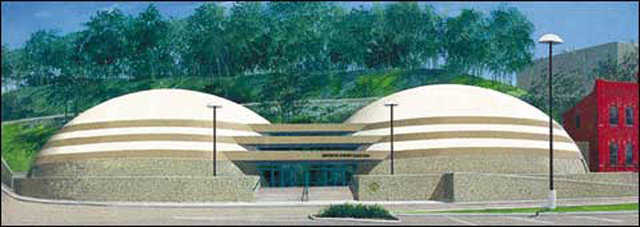
Park University Sports Event Center — Park University has twin domes with a 130-foot diameter and a connecting corridor for a two-story office complex.
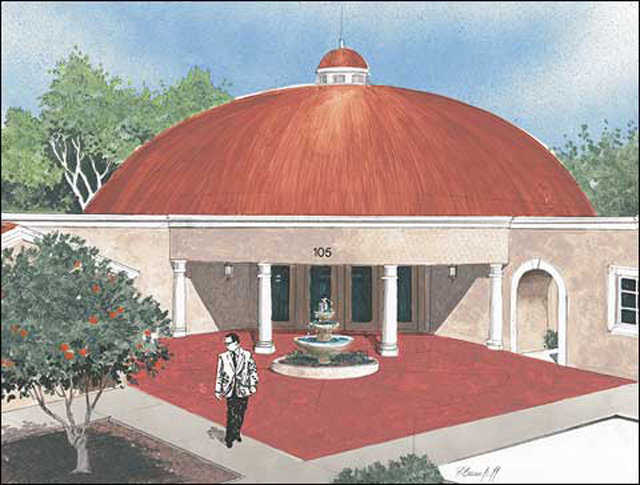
Crandall Design Group Headquarters — Its courtyard entrance and conventional additions lend visual interest to this Monolithic Dome office complex and design center.

Grand Meadow School — In 2001, Grand Meadow ISD in Minnesota celebrated a ground breaking for its new school campus with five Monolithic Domes.
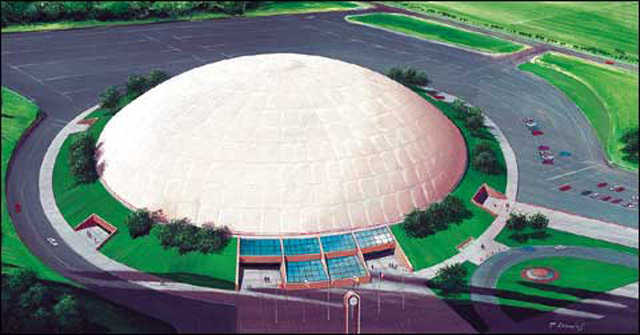
Crenosphere Rendition — This 400-foot Crenosphere could house an indoor football field. Rick believes that Crenospheres are the next logical stretch in the evolution of Monolithic Domes.
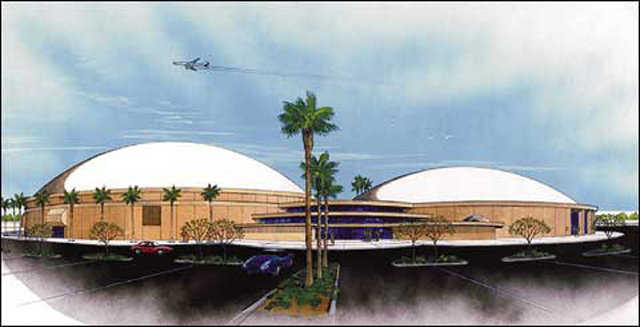
Sports Complex — Rick designed this Monolithic Dome facility as a hockey and multipurpose sports event complex.
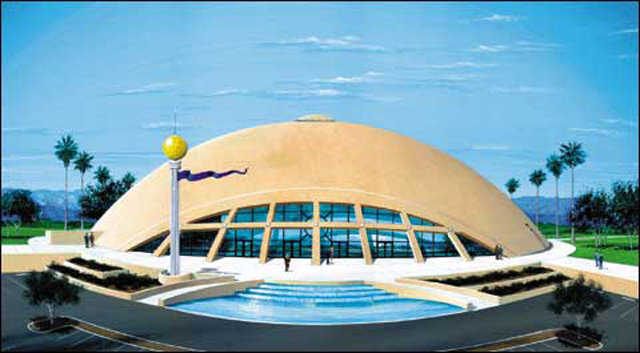
Rick’s Theater-in-the-Round — London’s original, 20-sided Globe Theatre, where Shakespeare produced many plays in the 17th century, had the appearance of a theater-in-the-round. Historically, a flag pole was used to announce plays, since the Puritans did not allow publicity. Rick hopes to see the theater-in-the-round concept materialize as a Monolithic Dome in the near future.
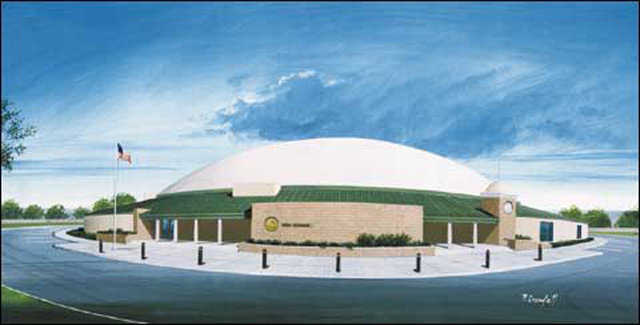
High School — Rendering of a 150-foot-diameter high school for approximately 450 students. Cafeteria and gymnasiums are centrally located and classrooms surround the perimeter. This rendering has been the catalyst for two completed Monolithic Dome projects.
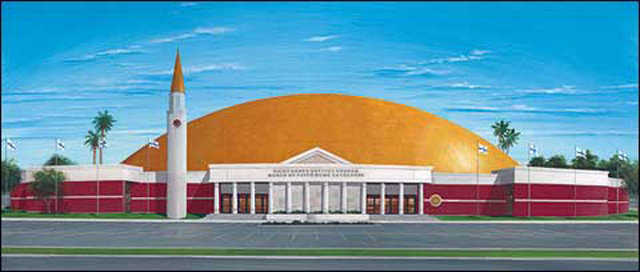
St. Agnes Baptist Church — This Monolithic Dome church in Houston, TX has a 200’ diameter, a 50’ height, a 31,000-square-foot interior and seating for 4000. When victims of Hurricane Katrina fled to Houston, this church became a Red Cross Center that processed and housed thousands.
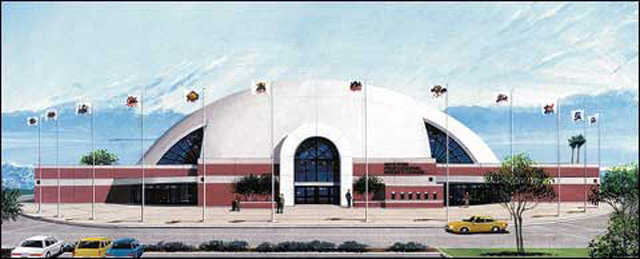
Giant Hockey Arena — This Monolithic Dome hockey arena can accommodate 8,000 spectators.
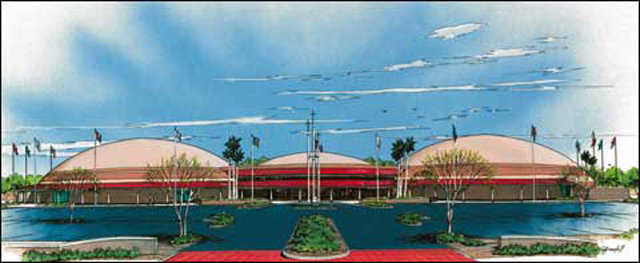
Living Word Bible Church — In Mesa, AZ, this church includes three, very different Monolithic Domes, each with a 150-foot diameter: a dark shell with a sanctuary-in-the-sky effect, a white dome with a gym and fellowship hall, and a sky shell or children’s castle dome.
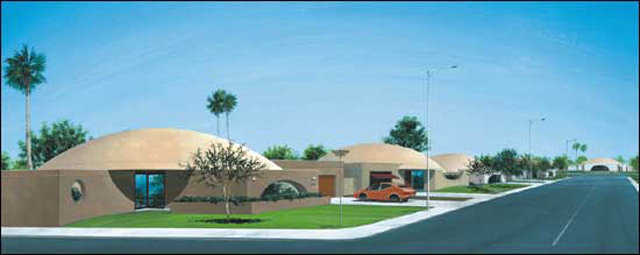
Dome Community — This rendering showcases the graceful, curved architecture of a future Monolithic Dome community.
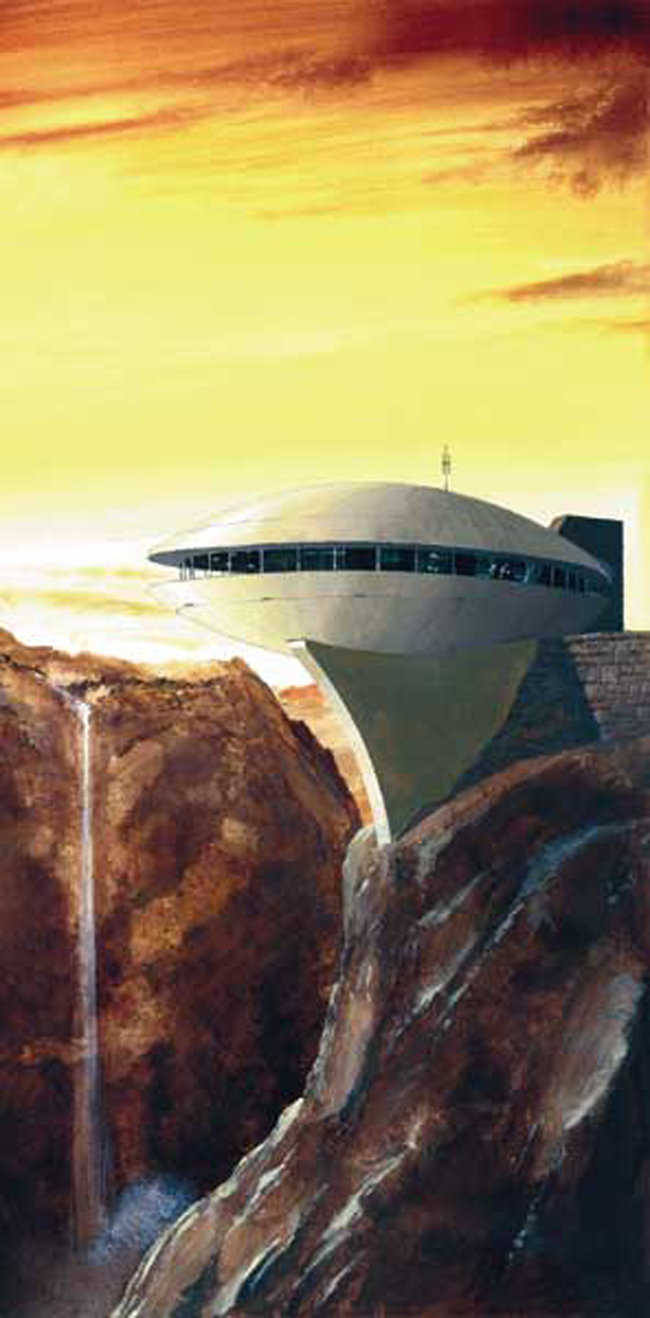
Dome on a Cliff — Can you really build that? This dome was designed on a cliff as a visitors center for a state park in Wyoming. It has not been built, but it is possible! This rendering was originally published on the cover of the Fall 1998 Roundup and quickly became our most popular issue.
